A multi-billion project is set to fast track not just the decongestion of Cebu’s worsening traffic condition but also, to speed up the growth of the region’s booming economy.
The Cebu Monorail Project is part and is eyed to be the main feature of the planned Cebu intermodal transportation system that integrates a monorail, a cable car, and a Bus Rapid Transit System (BRT), to provide Cebuanos efficient public transportation projects.
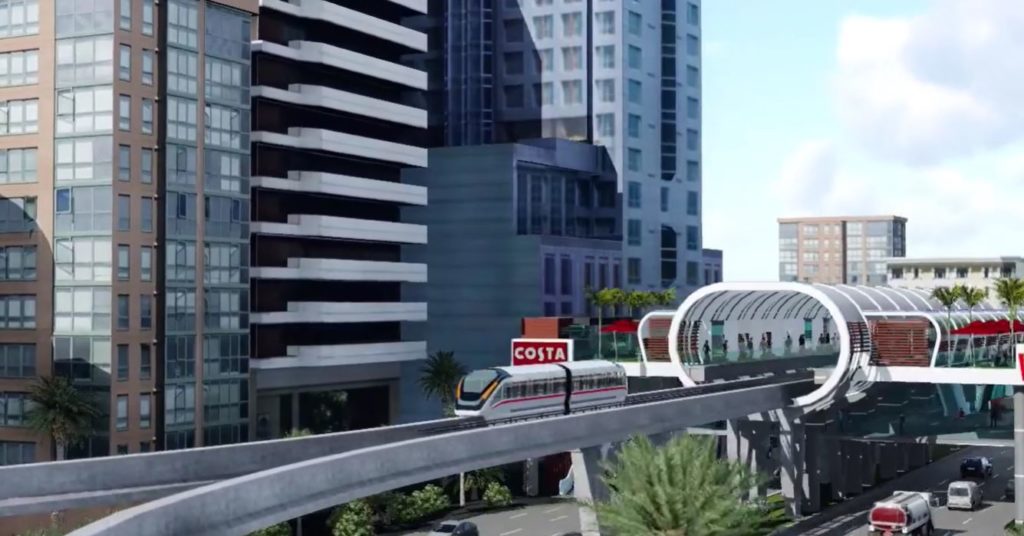
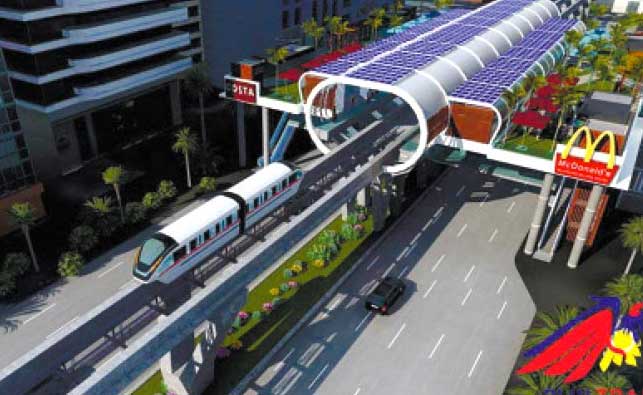
Udenna Infrastructure which had originally proposed a light rail transit (LRT) system, was granted original proponent status (OPS) for the proposed Cebu Rail Project in December 2018. It is chaired by Davao City-based businessman, Dennis Uy.
“We need to improve and modernize the public transport system of Cebu City and the Province of Cebu and in various places in Region 7,” said Department of Transportation (DOTr) Secretary Arthur Tugade during the inauguration of the new building of the Land Transportation Franchising and Regulatory Board (LTFRB-7) in Cebu.
He further said Cebuanos can expect partial operability of this monorail project before the end of 2021.
In his speech during last year’s Sinulog Festival, President Rodrigo Duterte said that Cebu should prioritize building its infrastructure and mass transportation systems to keep up with the island’s economic development.
THE MONORAIL PROJECT COMPOSITION
Cebu Monorail Project involves the construction and development of two lines – Central Line and Airport Line – and collectively has a span of approximately 27-kilometer rail transit system. It is pegged at a whopping PHP77.57-billion.
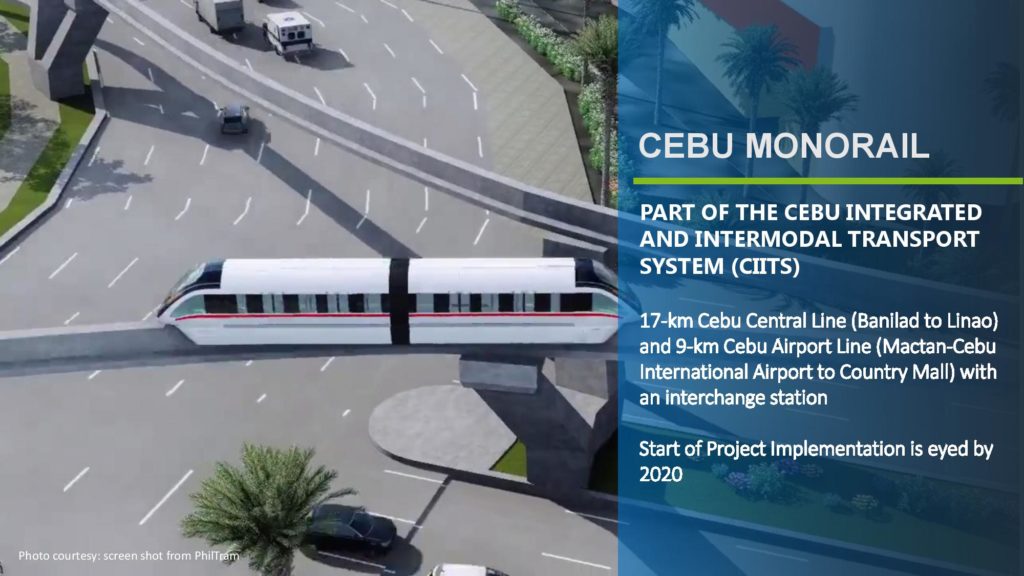
The Central Line will cover 17.7 kilometers from Talisay City to Cebu City, while the Airport Line will cover about 9.3 kilometers from Cebu City to the Mactan Cebu International Airport on Mactan Island. Both lines will converge at an interchange that will be established in Cebu City. These two lines are planned to be simultaneously implemented.
A 5-hectare depot facility is to be built close to the Mactan-Cebu International Airport (MCIA).
The monorail is designed to hold 12,000 to 15,000 passengers per direction per hour. It will first focus on the highly urbanized areas before expanding to cover the entire Metro Cebu.
MONORAIL, NOT LRT
Contrary to what has been widely circulated, the rapid transit system that will be established in Cebu will be a monorail, not a light rail transit (LRT).
Monorail has a distinctive technology that is fast to construct and has the same passenger-carrying capacity and operational efficiency with that of the LRT system. It runs on a single rail and is usually elevated.
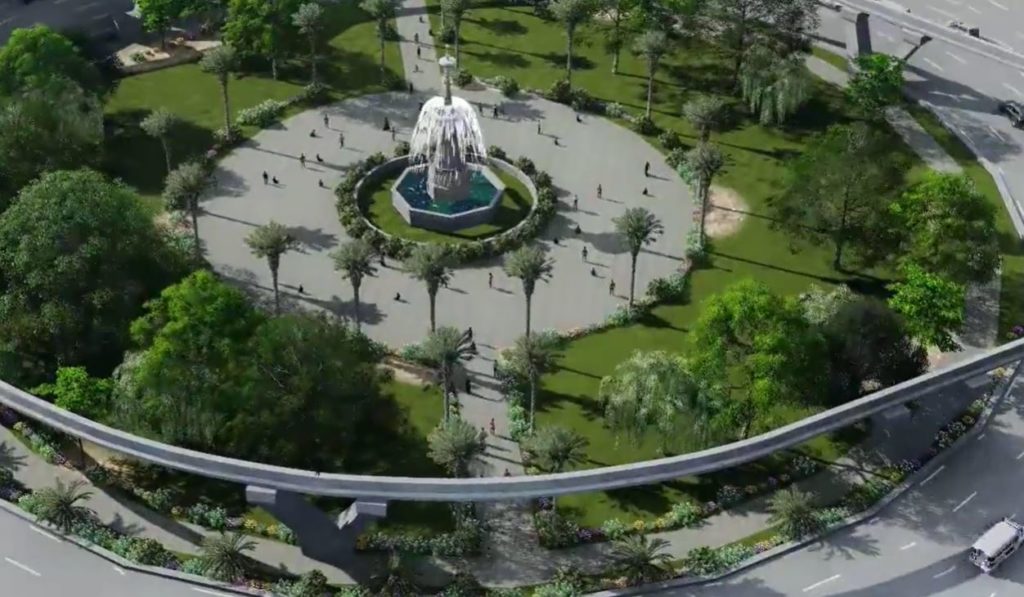
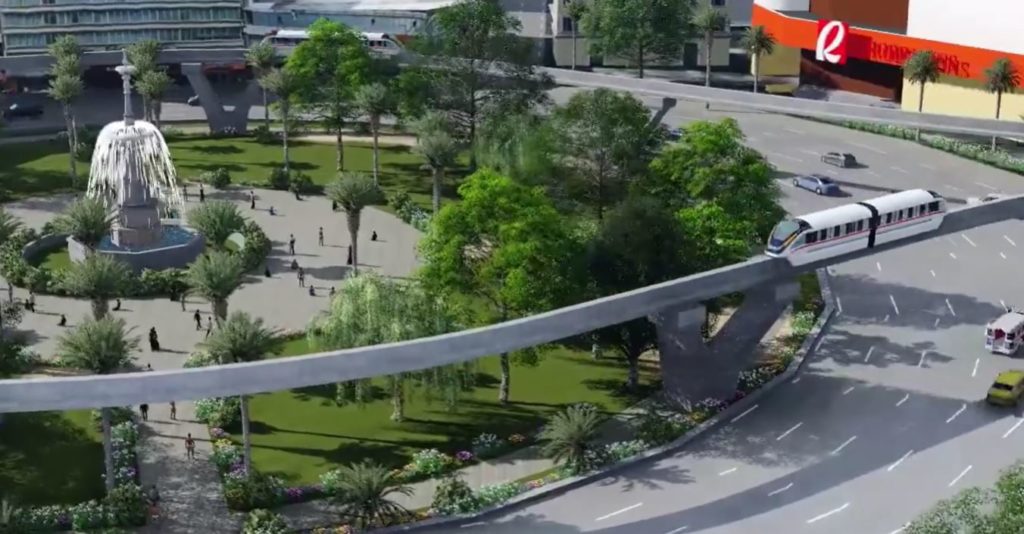
Using the monorail technology, the project cost will be brought down to about P80 billion, half of the estimated cost of an LRT system, said Manuel Jamonir, assistant vice president for operations and business development manager of Udenna Infrastructure.
Japan has earned the distinction of having a good number of transit monorails existing, eight of which are full-scale urban transit systems. Aside from US and Japan, monorails have also been a transport system in Malaysia, Europe, Russia, Korea, China, Brazil, UAE, Saudi Arabia, and Singapore.
CEBU’S WORSENING TRAFFIC CONDITION
In October 2019, the Cebu provincial government declared a traffic crisis over the entire island.
To date, there is still no efficient mass transportation system in Cebu despite it being a metropolitan area of over 2.5 million people. Commuters rely on the traditional buses, taxis, jeeps, tricycles and motorcycles-for-hire for their everyday mobility.
And while Cebu’s economy has risen to become one of the fastest growing in the country, becoming a center for property development, outsourcing industry and tourism, its worsening traffic congestion has also been costing the economy billions of losses daily.
To address this, Metro Cebu has been intensifying its public transportation and infrastructure projects. In fact, Cebu City government has started its own point-to-point (P2P) service called Beep, which has designated stops across the city. Private companies like SM and Robinsons also have their P2P buses between commercial establishments and landmarks to help reduce vehicular traffic.
During the governorship of Emilio Osmeña Jr. from 1988 to 1992, Cebu saw an economic growth outpacing that of the country. The progress during Osmeña’s time was later known as “Ceboom.”
It is no doubt that with the introduction of the Cebu Monorail Project, the world will soon witness an economy fast tracking its way towards global competence.
CeBoom – just like that of the 90s – but this time, in an international spotlight.

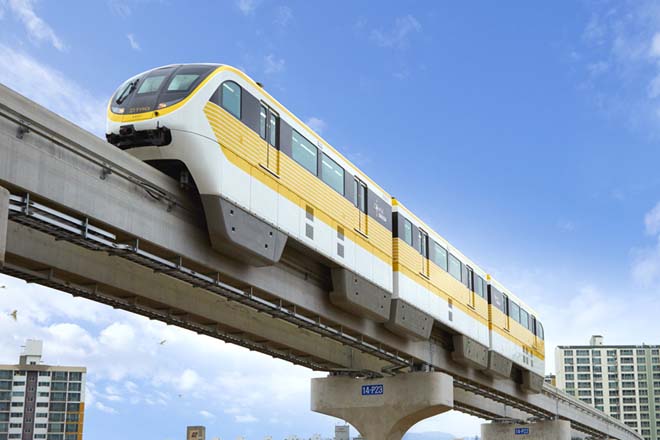
[…] Cebu Monorail: Fast-tracking decongestion of Cebu’s worsening traffic – [05/02/21] “The Cebu Monorail Project is part and is eyed to be the main feature of the planned Cebu intermodal transportation system that integrates a monorail, a cable car, and a Bus Rapid Transit System (BRT), to provide Cebuanos efficient public transportation projects.” […]
I’m impressed, I must say. Genuinely rarely can i encounter a blog that’s both educative and entertaining, and without a doubt, you’ve hit the nail to the head. Your idea is outstanding; the pain is an issue that there are not enough individuals are speaking intelligently about. We are delighted that we stumbled across this inside my try to find some thing about it.
Maypa masugdan na ni, masmugaan pa traffic sa atoa kung naa na ni, niya i hope mu consider sad silag train station para sayon adto north to south, east to west. Kung malessen ang private then mas magamay traffic and maslimpyo tanawun, though about Jeeps, like can both traditional and modern coexist together ( ik the traditional or old ver got some issues about the smoke but doesn’t drivers have to do a smoke test for vehicles? Hope it would be implemented more strictly so that these gems won’t disappeared, I wish we could at least still have them its also a way we can preserve something iconic and part of our culture just like the Kalesa and Tartanilla (Cebu)
when this project will start? They should start as soon as possible to augment the increasing volume of passengers.
Minibuses will just increase traffic and will kick out our jeeps which is the trademark of Philippine transport. Car owners will not leave their cars to take a minibus, but might do it for this new transport system that runs by electricity. Less traffic and less gasoline. Let one of these run from Talamban to Ayala
77 billion pesos can already purchase 38,500 units of the minibusses similar to the ones plying in the city. 64 people per bus for all 2.5 Million people in Cebu provice. meaning 2 people will have to share one seat per bus. as of 2017, there are about 406,930 registered vehicles in Cebu province 38,500 buses is definitely 90% lower in street occupancy — imagine no private cars running nor another type of passenger vehicles — streets will be 90% more open- – that’s when buses can shuttle people fast – also, did frank go buy some watermelons today?
When mag Simula ?
Better if make it already a subway to become future proof. Huwag niyo na gayahin ang kinahinatnan ng Metro Manila na nagkandaletche-letche na kung light lang ba talaga pero ang dami ng tao pang heavy na.